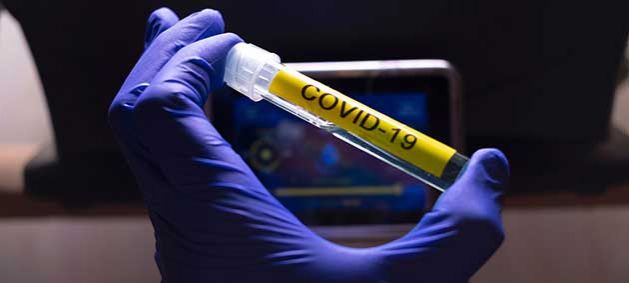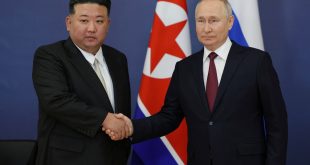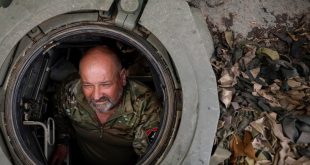Jan 20 (IPS) – COVID-19 vaccination programmes are gathering tempo in high-income nations, however for a lot of the world, the longer term seems bleaker. Though numerous middle-income nations have began rolling out vaccines, widespread vaccination may nonetheless be years away.
The primary two COVID-19 vaccines authorised in Europe and america – made by Pfizer/BioNTech and Moderna – aren’t well-suited to lower-income nations. Pfizer’s needs to be saved at -70°C, requiring expensive gear and infrastructure, and is pricey at roughly US$20 (£14.50) a dose. Moderna’s might be saved in a typical fridge for up to 30 days, however is much more costly. Low- and middle-income nations have consequently struck few direct offers to purchase these vaccines.
Availability can be an issue. Most of those vaccines have been bought by high-income countries. Pfizer has provided to supply solely 50 million doses of its vaccine to Africa’s 1.three billion folks between March and December 2021, whereas Moderna has none allotted for Africa this 12 months. Fears abound that, for some time at the very least, the vast majority of the world will go with out.
COVAX: not sufficient and too sluggish
Backed by the World Well being Group (WHO), the COVAX initiative was created to share COVID-19 vaccines all over the world, particularly with lower-income countries. In 2020, $2.four billion was raised, with agreements made to provide low- and middle-income nations entry to 1.3 billion vaccine doses.
Nevertheless, the Pfizer vaccine continues to be the one one which has acquired WHO emergency use listing, a minimal regulatory requirement for distribution by COVAX. A 3rd western vaccine – developed by Oxford/AstraZeneca – is considerably decrease priced, extra simply saved and has large-scale manufacturing partnerships in place, in addition to an settlement to produce COVAX, however is still awaiting approval from the WHO.
The WHO has stated COVAX will ship its first vaccines by the top of January on the earliest. By the top of 2021 it goals to have provided 2 billion doses globally.
However even when this promise is met, it is going to be inadequate. Talking on behalf of the African Union, South Africa’s president Cyril Ramaphosa expressed concern that “the COVAX volumes to be launched between February and June might not prolong past the wants of frontline healthcare staff, and will thus not be sufficient to include the ever-increasing toll of the pandemic in Africa”.
The full doses pledged by COVAX to Africa, he famous, will solely cowl 300 million folks, or 20% of the continent’s inhabitants.
India, China and Russia to the rescue?
Not wanting to attend, higher-income nations have bypassed COVAX by chopping direct deals with COVID-19 vaccine producers as an alternative. More and more they’re being joined by middle-income countries, akin to Argentina, Indonesia, South Africa and Turkey, however these nations are turning to completely different merchandise: vaccines made in India, China and Russia.
The Serum Institute of India (SII), the world’s largest vaccine producer, has a licence to supply the Oxford/AstraZeneca vaccine, whereas Bharat Biotech has developed its personal. India accredited each merchandise on January 3, and the home roll-out started on January 16.
India can be making its vaccine output out there to different nations. Bangladesh has accredited SII’s Oxford/AstraZeneca vaccine and has a deal for 30 million doses, whereas South Africa has announced it is going to procure 1 million by the top of January and one other half 1,000,000 in February.
The SII is considered one of three suppliers offering the African Union with 270 million vaccine doses, with 50 million due to arrive by June 2021. It should additionally provide COVAX, however the SII Oxford/AstraZeneca vaccine continues to be ready for regulatory approval from the WHO.
Following its earlier ventures in mask diplomacy, China has been extraordinarily energetic in using vaccines to construct political bridges as properly. President Xi Jinping has promised China’s vaccines will probably be out there as a global public good, and has additionally provided monetary help to assist Latin America and Africa purchase COVID-19 vaccines.
On December 31, China accredited a vaccine developed by state-owned pharmaceutical firm Sinopharm for basic use. The corporate tasks it is going to produce 1 billion doses in 2021, and the UAE, Bahrain and Morocco have all begun rolling out the vaccine. Egypt and Pakistan have introduced offers for 10 million and 1.2 million doses respectively.
Each Turkey and Indonesia have begun vaccination programmes with one other Sinovac vaccine, CoronaVac. Thailand and the Philippines may even quickly start rolling out this vaccine. Additional afield, the state of São Paolo in Brazil has agreed a deal for 46 million doses of CoronaVac and has administered the nation’s first COVID-19 inoculations with it.
Russia, the primary nation on the earth to approve a COVID-19 vaccine, can be energetic on vaccine diplomacy. Its Sputnik V jab acquired preliminary approval on August 11. Argentina started rolling out Sputnik V on December 24, and the vaccine is among the first for COVID-19 to be administered wherever in sub-Saharan Africa, in Guinea. Manufacturing partnerships are in place with Hetero Drugs and other Indian firms, in addition to for production in Turkey. The Brazilian state of Bahia has agreed to host further trials of Sputnik V in alternate for getting precedence entry to 50 million doses.
When will the world be vaccinated?
More and more, middle-income nations are accessing and starting COVID-19 vaccination programmes, however are doing so outdoors of the WHO’s procurement and regulatory mechanisms. Whereas that is allaying fears that they’d go fully with out, there is some mistrust arising across the testing and reported efficacy of vaccines that haven’t but had WHO approval.
If the world is to succeed in ample vaccine protection to halt COVID-19, current vaccines – together with these from India, China and Russia – must show efficient. Accessibility should additionally enhance in low-income nations, not simply in middle-income ones. Fears that the virus will mutate past these present vaccines should additionally stay unrealised.
It will possibly’t be overstated how monumental the vaccination activity is. Though possessing enormous manufacturing capability, India’s intention to vaccinate 300 million of its folks by August 2021 nonetheless means lower than 1 / 4 of its inhabitants may have had the vaccine. “For everybody on this planet – or at the very least 90% – to get it, it’s going to be at the very least 2024,” says Adar Poonawalla, CEO of the SII.
Rory Horner, Senior Lecturer, World Improvement Institute, University of Manchester
This text is republished from The Conversation beneath a Inventive Commons license. Learn the original article.
© Inter Press Service (2021) — All Rights ReservedOriginal source: Inter Press Service
 Top Naija News – Nigeria News, Nigerian News & Top Stories Top Naija News – Nigerian Newspapers, Nigerian News. topnaijanews is a daily Nigerian newspaper covering Latest News, Breaking News, Entertainment, Sports, Lifestyle and Politics.
Top Naija News – Nigeria News, Nigerian News & Top Stories Top Naija News – Nigerian Newspapers, Nigerian News. topnaijanews is a daily Nigerian newspaper covering Latest News, Breaking News, Entertainment, Sports, Lifestyle and Politics.




